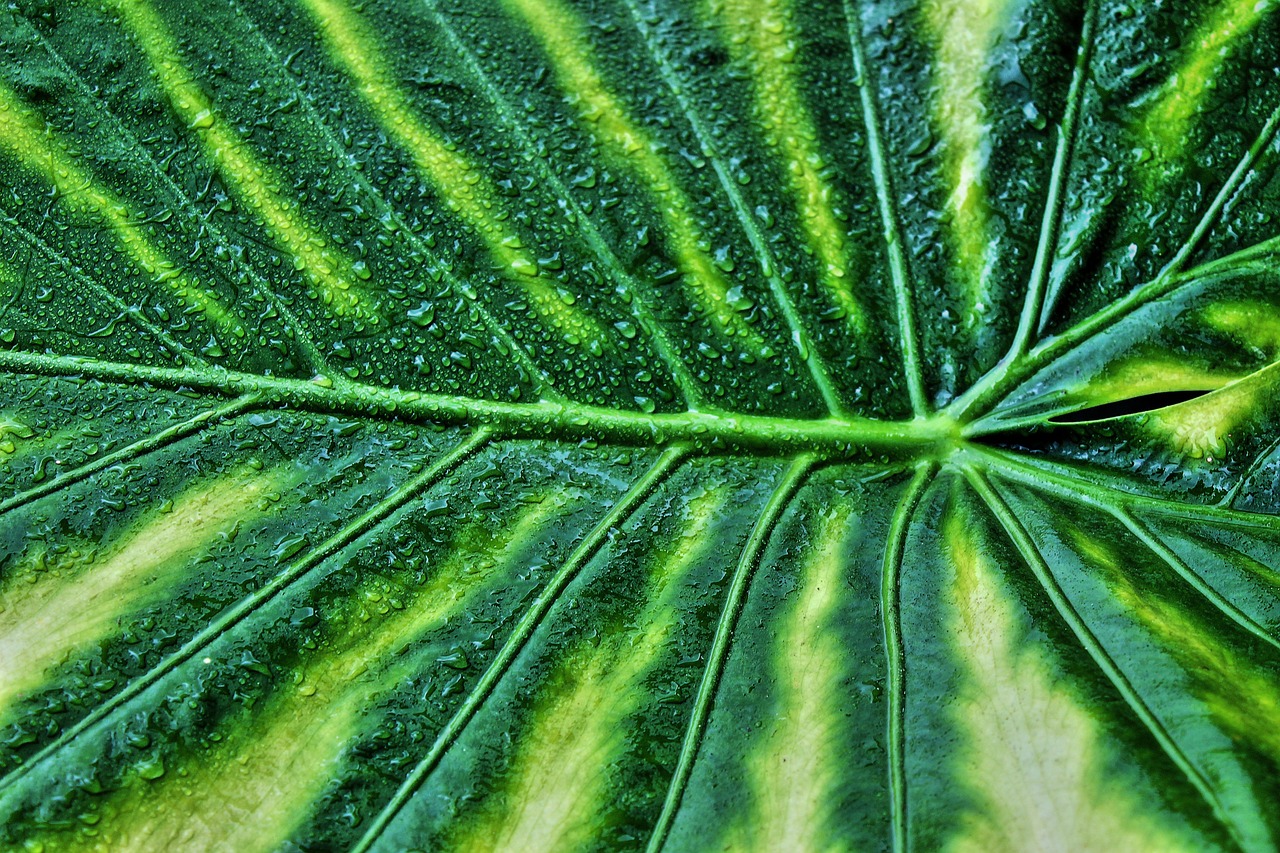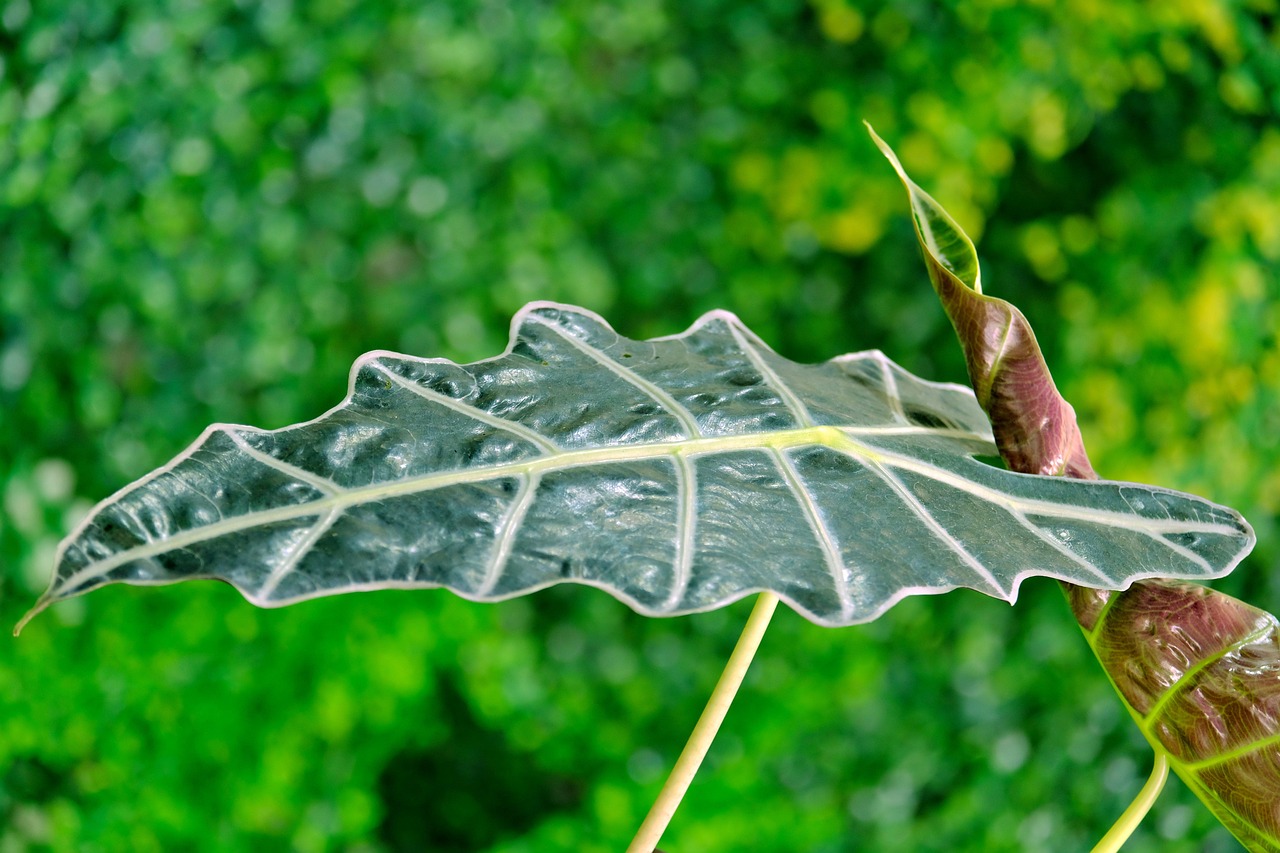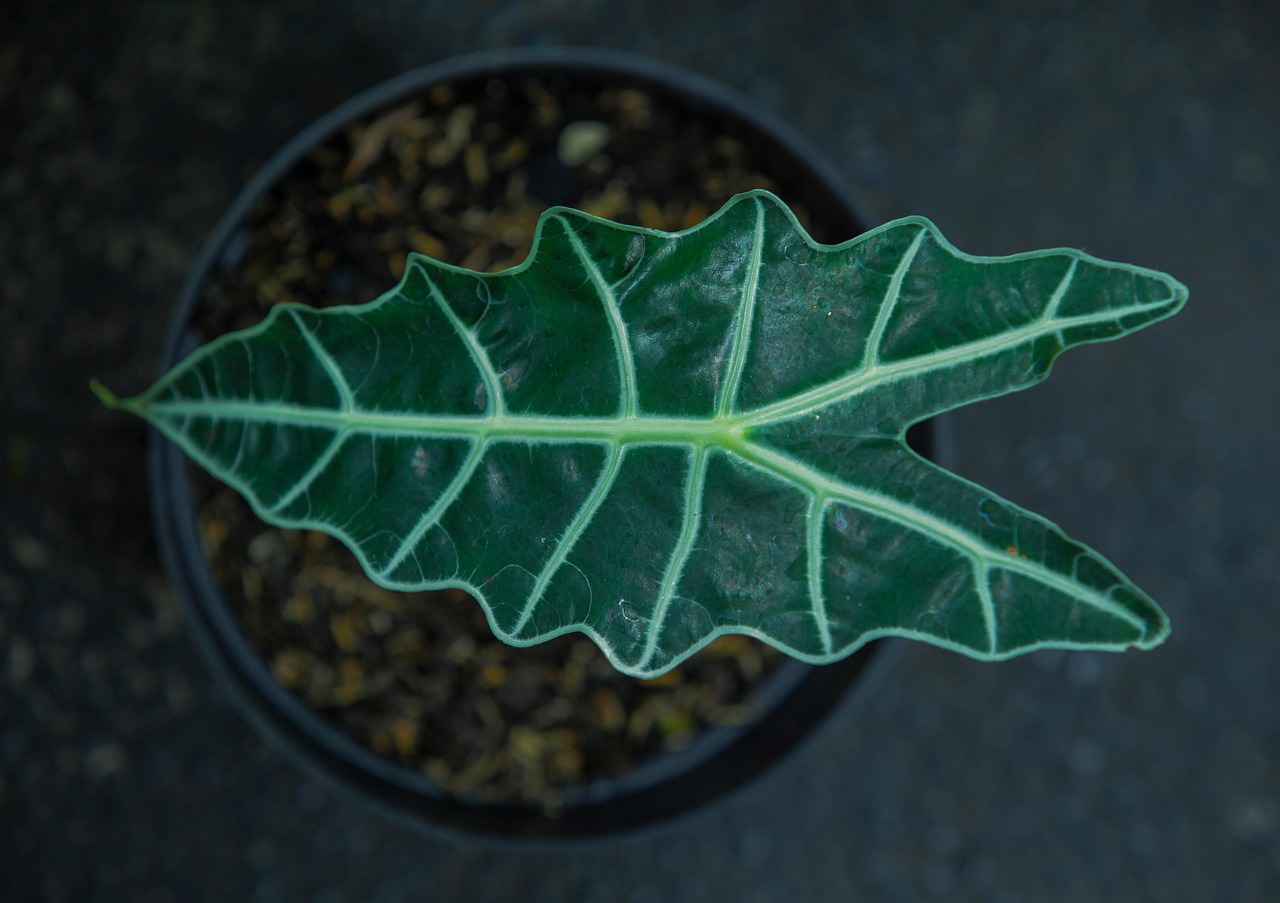Colocasia and Alocasia are two distinct genera in the family Araceae. While both are often confused due to their similar appearances, they have unique characteristics that set them apart. Understanding these differences is essential for gardeners looking to cultivate these beautiful plants successfully.
Understanding Colocasia and Alocasia

Colocasia and Alocasia are popular among gardeners and plant enthusiasts for their striking foliage and tropical appearance. Both genera originate from tropical regions, making them well-suited for warm climates. However, as a gardener, knowing the specific needs and characteristics of each can help you create the ideal growing environment.
Colocasia, commonly known as taro, is renowned for its large, heart-shaped leaves and sturdy growth habit. It thrives in wet, marshy conditions and is often found near water sources. On the other hand, Alocasia, often referred to as elephant ear or African mask plant, features more elongated leaves that can be arrow-shaped or even more dramatic in appearance. These plants generally prefer well-draining soil and can tolerate slightly drier conditions compared to Colocasia.
Both plants also vary in size and growth habits. Colocasia can grow quite large, with some species reaching heights of up to six feet or more. Alocasia varieties, while still impressive, tend to be smaller and more compact. This difference in size makes them suitable for varying garden spaces and designs.
Key Differences Between Colocasia and Alocasia
To help clarify the distinctions between these two genera, consider the following key characteristics:
| Feature | Colocasia | Alocasia |
|---|---|---|
| Leaf Shape | Heart-shaped | Arrow-shaped or elongated |
| Size | Can reach up to 6 feet | Generally smaller and more compact |
| Soil Preference | Prefers wet, marshy soil | Prefers well-draining soil |
| Water Requirements | High water needs | Moderate water needs |
These differences not only influence how each plant grows but also how they should be cared for in a garden setting. Understanding these needs will help you decide which plant is best suited for your garden or indoor space.
Growing Conditions
Both Colocasia and Alocasia thrive in similar climates but have specific preferences regarding their growing conditions. Colocasia enjoys full sun to partial shade, especially in hotter regions, while Alocasia prefers filtered sunlight or partial shade to prevent leaf burn. Providing the right light conditions is crucial for maintaining vibrant foliage and healthy growth.
Temperature also plays a significant role in the health of both plants. They both prefer warm temperatures but can tolerate cooler nights. It is important to protect them from frost and extreme cold, which can damage their leaves.
In summary, while both Colocasia and Alocasia are visually appealing additions to any garden, their differences in size, leaf shape, soil preference, and water needs are essential factors every gardener should consider when planning their landscape.
Propagation Methods
Understanding how to propagate Colocasia and Alocasia is vital for any gardener looking to expand their collection. Both plants can be propagated through various methods, and knowing the best approach for each can lead to successful growth.
Colocasia Propagation
Colocasia can be propagated effectively using the following methods:
- Tuber Division: This is the most common method. In spring, when the plant is actively growing, carefully dig up the tubers. Each tuber should have at least one eye or sprout. Replant them in moist soil.
- Offsets: Colocasia produces offsets or smaller plants around the main tuber. These can be separated and planted individually. Ensure they have some roots attached.
- Seeds: While less common, Colocasia can also be grown from seeds. This method requires patience, as seeds take longer to germinate and establish.
Alocasia Propagation
Alocasia propagation can be done using similar methods but with some variations:
- Offsets: Like Colocasia, Alocasia produces offsets. These can be removed and replanted when they are a few inches tall and have developed roots.
- Leaf Cuttings: Alocasia can be propagated from leaf cuttings. Cut a healthy leaf into sections and place them in water or moist soil. New plants will sprout from the base of the cutting.
- Division: Similar to tuber division in Colocasia, Alocasia can be divided in spring. Carefully separate the root ball into sections, ensuring each section has roots.
Pest and Disease Management
Both Colocasia and Alocasia are susceptible to certain pests and diseases. Recognizing these issues early can help maintain healthy plants.
Pests
The most common pests that affect these plants include:
- Aphids: These small insects suck sap from the leaves, leading to yellowing and curling.
- Spider Mites: These tiny creatures thrive in dry conditions, causing stippling on leaves.
- Mealybugs: They appear as white cotton-like masses on the foliage. They weaken plants by feeding on sap.
Disease
Some diseases to watch for include:
- Root Rot: Often caused by overwatering, root rot leads to wilting and yellowing leaves.
- Leaf Spot: This condition manifests as dark spots on leaves, generally due to fungal infections.
- Powdery Mildew: A white powdery substance on leaves indicates a fungal infection often linked to high humidity and poor air circulation.
To manage pests and diseases effectively, consider implementing the following strategies:
- Regular Inspections: Frequently check your plants for signs of pests or disease. Early detection is key to prevention.
- Proper Watering: Avoid overwatering to prevent root rot. Ensure pots have good drainage.
- Natural Remedies: Use insecticidal soap or neem oil as natural treatments for pest infestations.
- Healthy Environment: Maintain adequate air circulation and humidity levels to reduce disease risk.
Nutritional Needs
Nutritional requirements differ between Colocasia and Alocasia, impacting their growth and overall health. Both plants benefit from a balanced fertilizer but have varying preferences for nutrient types.
Colocasia Nutritional Needs
Colocasia thrives with high nitrogen fertilizers, especially during the growing season. This promotes lush foliage growth. Consider using a fertilizer with a higher nitrogen ratio, such as 10-10-10, during spring and summer months.
Alocasia Nutritional Needs
Alocasia prefers a balanced fertilizer. A 20-20-20 ratio is often recommended during its active growing period. However, it is essential not to over-fertilize, as this can lead to salt buildup in the soil.
In both cases, it is advisable to reduce feeding during the fall and winter months when the plants enter dormancy. Ensuring proper nutrition will lead to healthier and more vibrant plants.
Common Varieties of Colocasia and Alocasia

When choosing between Colocasia and Alocasia, it helps to know the popular varieties of each. These plants come in a range of sizes, shapes, and colors, making them versatile choices for any garden.
Popular Colocasia Varieties
Here are some noteworthy varieties of Colocasia:
- Colocasia esculenta: Also known as taro, this variety is widely cultivated for its edible corms. It features large, heart-shaped leaves that can grow up to three feet long.
- Colocasia ‘Black Magic’: This variety is prized for its dark, almost black leaves with a glossy finish. It adds a dramatic touch to any landscape.
- Colocasia ‘Mojito’: Known for its striking green and white variegated leaves, this variety can brighten up shaded areas in the garden.
- Colocasia ‘Illustris’: This variety has beautiful dark green leaves with striking purple veins, making it an eye-catching addition to tropical gardens.
Popular Alocasia Varieties
Alocasia also boasts several attractive varieties:
- Alocasia amazonica: Often known as African Mask Plant, it features arrow-shaped leaves with distinctive white veins. This variety is popular for indoor settings due to its unique appearance.
- Alocasia zebrina: This variety is recognized for its zebra-like stems and large, glossy leaves. It is a favorite among collectors for its ornamental value.
- Alocasia micholitziana: Commonly referred to as Dragon Scale due to its textured leaves, this variety is sought after for its striking foliage and compact size.
- Alocasia ‘Regal Shield’: This variety features large, dark green leaves with a slight sheen, providing an elegant look in both indoor and outdoor settings.
Cultural Significance and Uses
Both Colocasia and Alocasia hold significant cultural importance in various regions around the world. Beyond their ornamental value, these plants are used in culinary practices, traditional medicine, and even art.
Culinary Uses
Colocasia, particularly Colocasia esculenta, is well-known for its edible corms. Taro is a staple food in many Asian cuisines and is often used in dishes such as:
- Taro Chips: Thinly sliced and fried, these chips make a crunchy snack.
- Taro Cake: A popular dim sum dish made from grated taro mixed with flour and steamed.
- Taro Bubble Tea: This sweet beverage features taro flavoring, creating a unique taste experience.
In contrast, Alocasia is not typically consumed due to its high oxalate content, which can be toxic if not properly cooked. However, its striking appearance makes it a prominent feature in decorative dishes and arrangements.
Cultural Significance
In many cultures, Colocasia is associated with prosperity and abundance. For instance:
- In Hawaiian culture, taro is considered a sacred plant and is used in traditional rituals.
- In Southeast Asia, it symbolizes fertility and is often included in ceremonial offerings.
Alocasia, on the other hand, often symbolizes strength and resilience due to its robust nature. In various cultures, it is believed to bring good luck when placed in homes or gardens.
Landscaping Ideas with Colocasia and Alocasia
Using Colocasia and Alocasia in landscaping can create stunning tropical displays. Here are some ideas on how to incorporate these plants into your outdoor space:
Tropical Garden Design
Both plants thrive in tropical-themed gardens. Consider the following approaches:
- Mixed Planting: Combine Colocasia with colorful flowering plants like hibiscus or bougainvillea for a vibrant display.
- Focal Points: Use larger varieties of Alocasia as focal points in garden beds or pots to create height and interest.
Container Gardening
If space is limited, consider container gardening:
- Patio Displays: Plant Colocasia or Alocasia in decorative pots to enhance patio areas with lush greenery.
- Indoor Decor: Both plants can thrive indoors with proper care. Position them near windows where they can receive indirect sunlight.
Their dramatic foliage can serve as a statement piece in both indoor and outdoor environments. Careful planning will ensure these plants thrive while enhancing the beauty of your space.
Care Tips for Colocasia and Alocasia

To ensure that Colocasia and Alocasia thrive in your garden or home, certain care tips should be followed. These plants have specific needs that, when met, can lead to vibrant growth and stunning foliage.
Watering Techniques
Both Colocasia and Alocasia prefer moist conditions, but the watering techniques may differ slightly:
- Colocasia: This plant enjoys consistently wet soil. Water regularly to keep the soil moist but not soggy. If grown in containers, ensure proper drainage to prevent root rot.
- Alocasia: While it also prefers moist soil, Alocasia can tolerate drier conditions than Colocasia. Water when the top inch of soil feels dry. This helps prevent overwatering and promotes healthy growth.
Light Requirements
Light is crucial for both plants but should be managed according to their specific preferences:
- Colocasia: Thrives in full sun to partial shade. In hotter climates, partial shade is ideal to prevent leaf scorch.
- Alocasia: Prefers bright, indirect light. Too much direct sunlight can lead to leaf burn, so filtered light is best.
Soil Composition
Choosing the right soil is fundamental for the health of both plants:
- Colocasia: Requires rich, organic soil that retains moisture. A mix of potting soil with peat and vermiculite can provide the necessary moisture retention.
- Alocasia: Prefers well-draining soil, ideally a mix of potting soil with perlite or sand. This helps prevent waterlogging and aids in healthy root development.
Pest Management Strategies

Dealing with pests is an important aspect of maintaining healthy Colocasia and Alocasia plants. Implementing preventive measures can significantly reduce the chances of infestations:
- Regular Monitoring: Check leaves and stems frequently for any signs of pests. Catching infestations early can help mitigate damage.
- Natural Predators: Introducing beneficial insects, such as ladybugs, can help control pest populations naturally.
- Hygiene Practices: Keep the area around your plants clean and remove any dead leaves or debris that may harbor pests.
Conclusion
In summary, understanding the key differences between Colocasia and Alocasia allows gardeners to make informed decisions when selecting these plants for their spaces. While they share similarities in their tropical appeal, their unique characteristics, such as leaf shape, water needs, and soil preferences, set them apart.
Both plants can elevate your garden or indoor environment with their stunning foliage. Whether you opt for the large, heart-shaped leaves of Colocasia or the elegant, arrow-shaped leaves of Alocasia, each offers a special touch of nature’s beauty.
Caring for these plants requires attention to their specific needs in terms of watering, light, soil composition, and pest management. By providing the right conditions and care, you can enjoy healthy growth and vibrant displays throughout the seasons.
The cultural significance and culinary uses of Colocasia further enhance its appeal, making it not only an ornamental choice but also a valuable addition to your kitchen. As you explore the world of these captivating plants, remember that knowledge is key to successful gardening.
Ultimately, whether you choose Colocasia or Alocasia—or both—embracing their differences will lead to a flourishing garden filled with life and color. Happy gardening!
